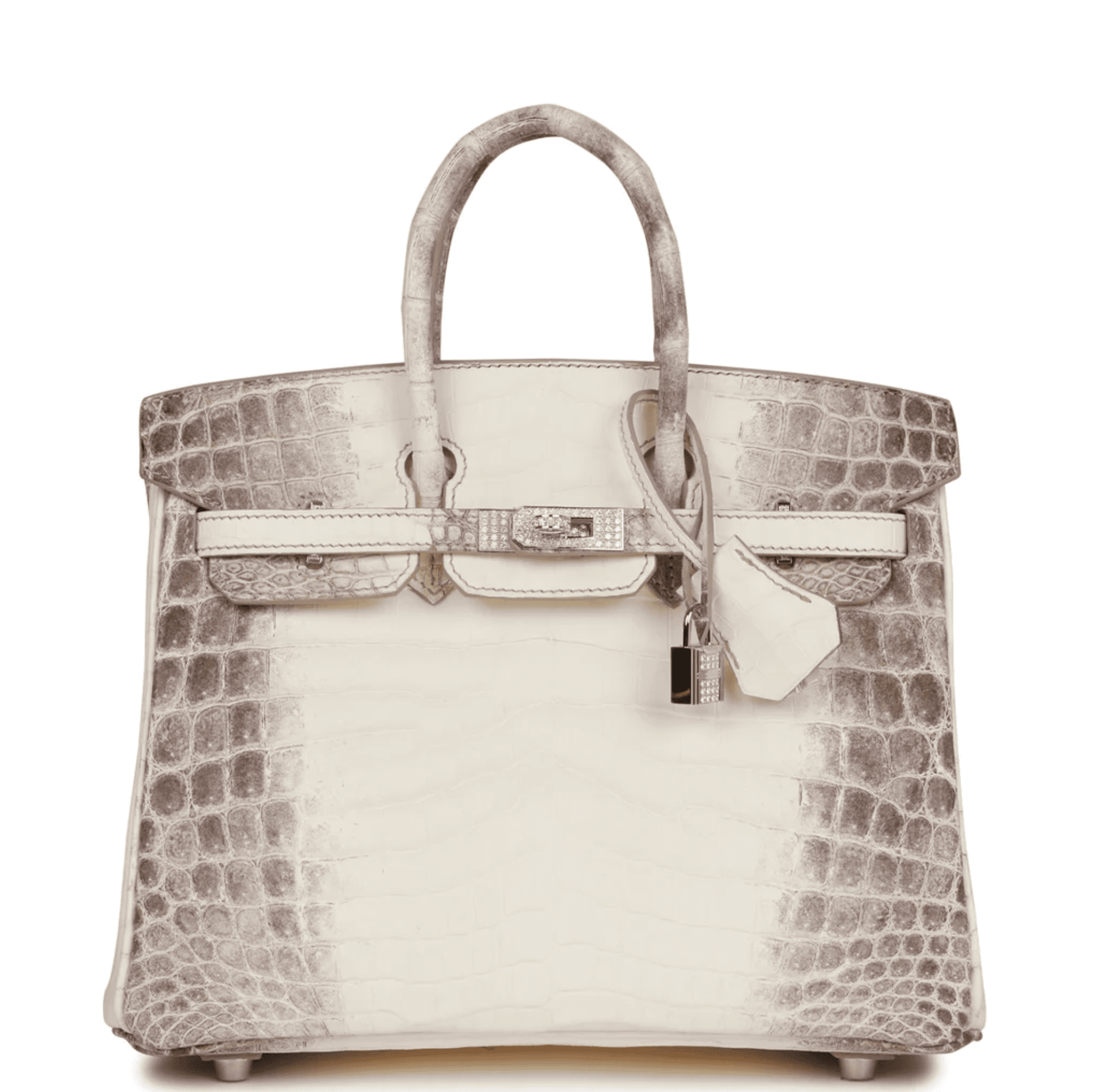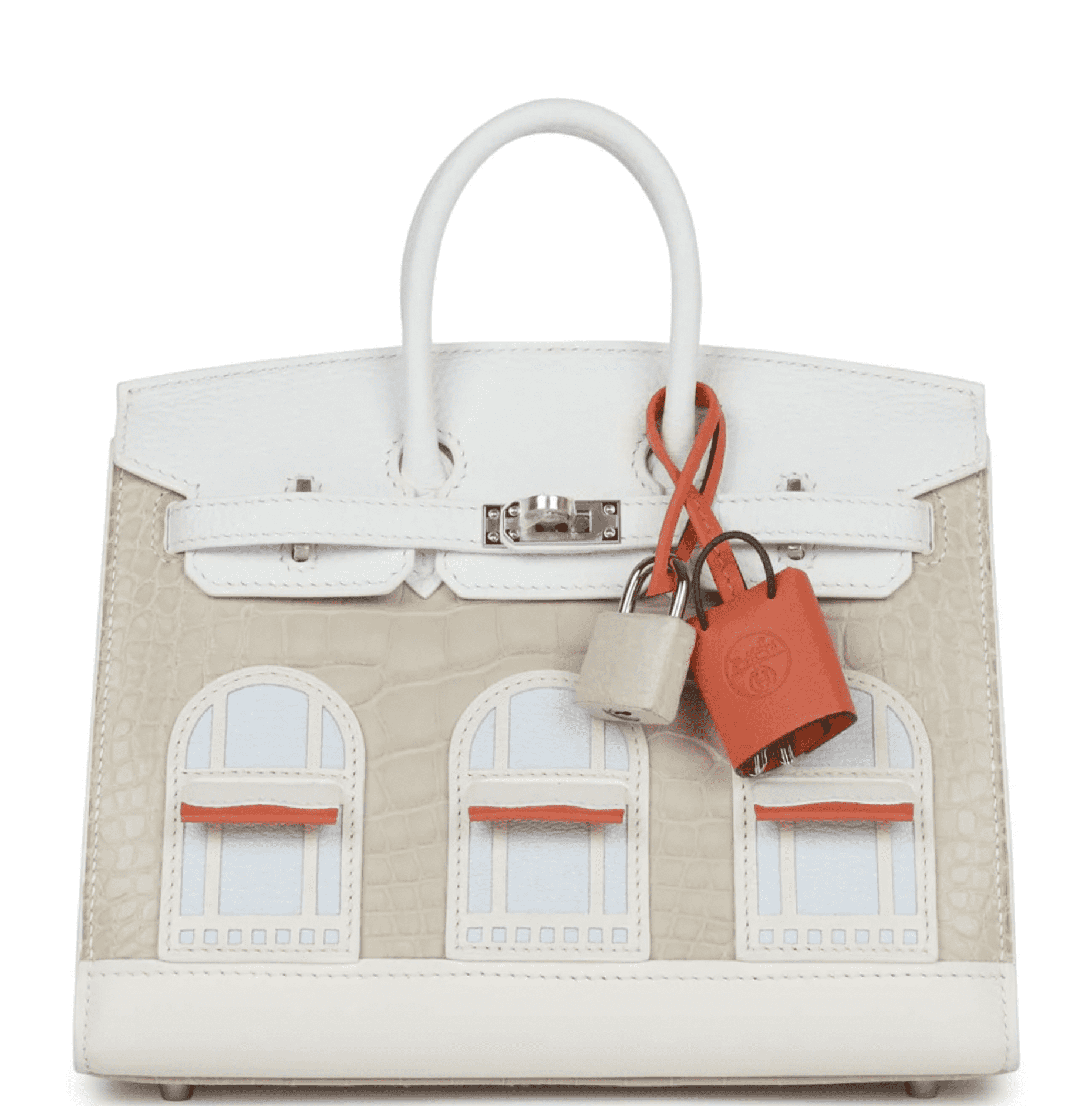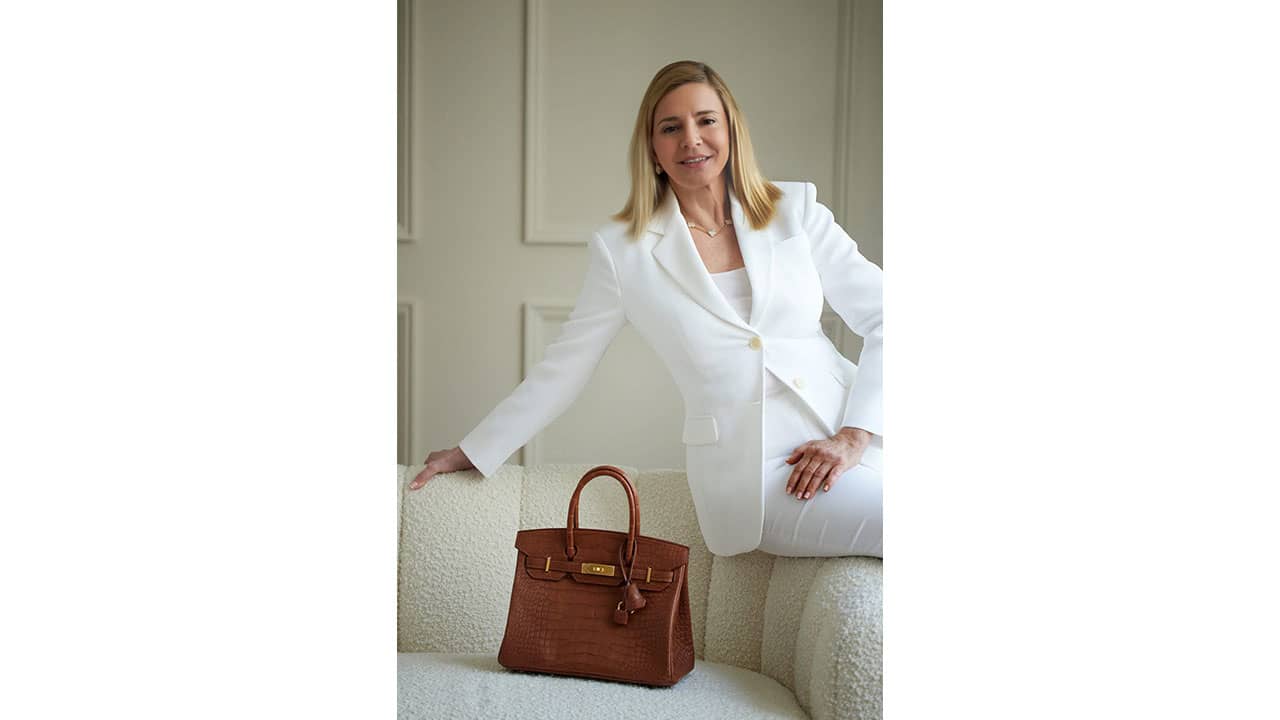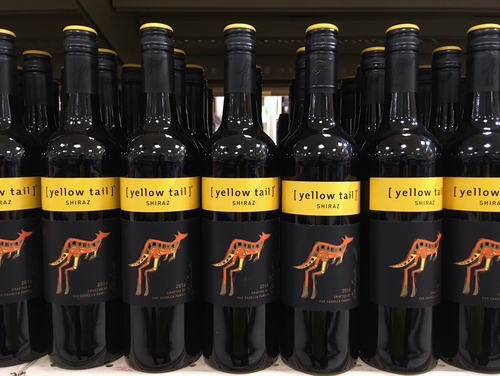Meet the Woman Taking the ‘Blood Sport’ out of Buying a Coveted Hermès Birkin Bag
The impetus for Judy Taylor to start her luxury handbag and jewellery resale company Madison Avenue Couture dates back to her career in investment banking more than two decades ago. At the time, she was an avid shopper for high-end clothing and had built a sizeable collection of corporate wear from designer labels.
Taylor eventually took an extended break from banking to travel the world and decided to sell the clothing on eBay.
“I was surprised at the money I netted by selling these used items and realised the potential of the online resale market,” Taylor says. “Not being someone to let an opportunity pass, I began to buy and sell new and almost new luxury clothing, shoes and handbags and saw how much they were in demand.”

Courtesy of Madison Avenue Couture
Her homespun venture quickly grew into a full-fledged profitable business, and in 2010, she established Madison Avenue Couture. Today, the brand bills itself to be the largest online independent reseller of new and never-worn Hermès holy grail bags, primarily Birkins and Kellys that are nearly impossible to find. It also sells a selection of pre-owned collectible and vintage Hermès, Chanel, Goyard, and Louis Vuitton bags, Hermès and Chanel jewellery, and accessories and sought-after fine jewellery.
Taylor says that her company enables any consumer with the means to buy highly in-demand goods.
“You can’t just go into Hermès and buy a Birkin because there usually aren’t any available, and if they are, customers are limited to buying two bags a year,” she says. “Chanel has also limited purchases since Covid, and other brands have imposed restrictions.”
According to Taylor, these tactics have increased market demand and have enabled luxury labels to increase their prices. However, since supply cannot meet demand, consumers are increasingly reaching out to the resale market, including her company, for these items.
“Our business continues to grow, and we have an extensive network to source handbags and jewelry,” Taylor says. “Unlike much of the traditional resale market, our items are primarily new and never used and carry a premium over [the] retail price.”
Taylor, 59, speaks with Penta about her company and the luxury resale market overall.
Can you talk about how the luxury resale market for handbags and jewellery has evolved in recent years, especially since the pandemic?
About three weeks into the pandemic, we started getting orders. They were slow at first but then accelerated.
With retail stores closed and travel restricted, people turned online to shop. The only place to purchase new Hermès and Chanel handbags was online and from dealers on the secondary market. They became comfortable with buying these brands online. Sales increased by 60% in 2020 and doubled in 2021, compared to the prior years. Even after the brand boutiques opened and travel resumed, online sales continued their momentum. Our sales quadrupled from 2019 to 2023.23.
Who are your customers, and have they changed over the years?
Our clients are primarily those who have disposable income and love to spend it on beautiful things. Partners of hedge funds, investment bankers and law firms, self-made entrepreneurs, physicians and dentists, celebrities and socialites represent the bulk. But we always have the aspiring—those for whom buying a Birkin or Kelly is a bit of a financial stretch.
What are the advantages of buying a resale bag or piece of jewellery?
Hermès and Chanel do not offer their handbags online. While Hermès.com may offer one or a few small bags on occasion, they are sold out in seconds. The same goes for branded jewellery, notably Van Cleef & Arpels. Try purchasing a popular VC&A Alhambra piece online or in one of their stores to take home immediately—it is almost impossible.

Madison Avenue Couture
The second is ease of purchase. Hermès has made getting a holy grail bag almost a “blood sport.” The machinations that someone goes through to get a Birkin or Kelly are anxiety-producing for most. First, you need to find a friendly sales associate. Then, a profile must be built, which involves spending on Hermès goods that are not leather handbags. The more the spend, the greater the chance of getting a handbag. Expensive furniture, fine jewellery, and watches have the greatest sway. Scarves or a pair of shoes won’t bat an eyelash. The amount needed to be spent is unknown, but we’ve heard it could be significantly more than the price of the bag. Plus, there is no guarantee that it will result in getting the bag of your dreams.
In the secondary market, you can pick the bag of your dreams without the hassle and stress of building a profile.
How do you source your items, and how are you able to guarantee their authenticity?
We purchase from individuals and other handbag dealers primarily. We usually get the original store receipt or a copy of it for most bags we purchase, which establishes provenance. Regardless of having the receipt or not, every bag goes through in-house and third-party authentication. We chose who we believe to be the best independent authenticators of Hermès and Chanel, which is where we find the most counterfeits.
What are some of the most in-demand brands and items for buyers who can afford them?
Hermès and Chanel handbags are generally in demand by professional and affluent women and men who give them as gifts. Goyard is popular because it evokes quiet luxury. In jewellery, we see the greatest demand is for Van Cleef & Arpels pieces, particularly the Alhambra series.
What advice do you have for people who want to find a specific piece from a source outside of the brand itself?
We recommend that people purchase only from dealers who guarantee authenticity and have a history of selling only authentic bags.
Furthermore, rely on a reseller that has its inventory on hand like us. We have already checked the condition, verified authenticity, and confirmed availability. Marketplaces, which aggregate different vendors, cannot know for certain if an item is available, in the stated condition or authentic. (Some authenticate after the item is sold, which delays getting the item.) Resellers that do not have an item in stock will source it, which can take weeks and may not be in the condition described.
This interview has been edited for length and clarity.
 Copyright 2020, Dow Jones & Company, Inc. All Rights Reserved Worldwide. LEARN MORE
Copyright 2020, Dow Jones & Company, Inc. All Rights Reserved Worldwide. LEARN MORE
This stylish family home combines a classic palette and finishes with a flexible floorplan
Just 55 minutes from Sydney, make this your creative getaway located in the majestic Hawkesbury region.
Impact investing is becoming more mainstream as larger, institutional asset owners drive more money into the sector, according to the nonprofit Global Impact Investing Network in New York.
In the GIIN’s State of the Market 2024 report, published late last month, researchers found that assets allocated to impact-investing strategies by repeat survey responders grew by a compound annual growth rate (CAGR) of 14% over the last five years.
These 71 responders to both the 2019 and 2024 surveys saw their total impact assets under management grow to US$249 billion this year from US$129 billion five years ago.
Medium- and large-size investors were largely responsible for the strong impact returns: Medium-size investors posted a median CAGR of 11% a year over the five-year period, and large-size investors posted a median CAGR of 14% a year.
Interestingly, the CAGR of assets held by small investors dropped by a median of 14% a year.
“When we drill down behind the compound annual growth of the assets that are being allocated to impact investing, it’s largely those larger investors that are actually driving it,” says Dean Hand, the GIIN’s chief research officer.
Overall, the GIIN surveyed 305 investors with a combined US$490 billion under management from 39 countries. Nearly three-quarters of the responders were investment managers, while 10% were foundations, and 3% were family offices. Development finance institutions, institutional asset owners, and companies represented most of the rest.
The majority of impact strategies are executed through private-equity, but public debt and equity have been the fastest-growing asset classes over the past five years, the report said. Public debt is growing at a CAGR of 32%, and public equity is growing at a CAGR of 19%. That compares to a CAGR of 17% for private equity and 7% for private debt.
According to the GIIN, the rise in public impact assets is being driven by larger investors, likely institutions.
Private equity has traditionally served as an ideal way to execute impact strategies, as it allows investors to select vehicles specifically designed to create a positive social or environmental impact by, for example, providing loans to smallholder farmers in Africa or by supporting fledging renewable energy technologies.
Future Returns: Preqin expects managers to rely on family offices, private banks, and individual investors for growth in the next six years
But today, institutional investors are looking across their portfolios—encompassing both private and public assets—to achieve their impact goals.
“Institutional asset owners are saying, ‘In the interests of our ultimate beneficiaries, we probably need to start driving these strategies across our assets,’” Hand says. Instead of carving out a dedicated impact strategy, these investors are taking “a holistic portfolio approach.”
An institutional manager may want to address issues such as climate change, healthcare costs, and local economic growth so it can support a better quality of life for its beneficiaries.
To achieve these goals, the manager could invest across a range of private debt, private equity, and real estate.
But the public markets offer opportunities, too. Using public debt, a manager could, for example, invest in green bonds, regional bank bonds, or healthcare social bonds. In public equity, it could invest in green-power storage technologies, minority-focused real-estate trusts, and in pharmaceutical and medical-care company stocks with the aim of influencing them to lower the costs of care, according to an example the GIIN lays out in a separate report on institutional strategies.
Influencing companies to act in the best interests of society and the environment is increasingly being done through such shareholder advocacy, either directly through ownership in individual stocks or through fund vehicles.
“They’re trying to move their portfolio companies to actually solving some of the challenges that exist,” Hand says.
Although the rate of growth in public strategies for impact is brisk, among survey respondents investments in public debt totaled only 12% of assets and just 7% in public equity. Private equity, however, grabs 43% of these investors’ assets.
Within private equity, Hand also discerns more evidence of maturity in the impact sector. That’s because more impact-oriented asset owners invest in mature and growth-stage companies, which are favored by larger asset owners that have more substantial assets to put to work.
The GIIN State of the Market report also found that impact asset owners are largely happy with both the financial performance and impact results of their holdings.
About three-quarters of those surveyed were seeking risk-adjusted, market-rate returns, although foundations were an exception as 68% sought below-market returns, the report said. Overall, 86% reported their investments were performing in line or above their expectations—even when their targets were not met—and 90% said the same for their impact returns.
Private-equity posted the strongest results, returning 17% on average, although that was less than the 19% targeted return. By contrast, public equity returned 11%, above a 10% target.
The fact some asset classes over performed and others underperformed, shows that “normal economic forces are at play in the market,” Hand says.
Although investors are satisfied with their impact performance, they are still dealing with a fragmented approach for measuring it, the report said. “Despite this, over two-thirds of investors are incorporating impact criteria into their investment governance documents, signalling a significant shift toward formalising impact considerations in decision-making processes,” it said.
Also, more investors are getting third-party verification of their results, which strengthens their accountability in the market.
“The satisfaction with performance is nice to see,” Hand says. “But we do need to see more about what’s happening in terms of investors being able to actually track both the impact performance in real terms as well as the financial performance in real terms.”
This stylish family home combines a classic palette and finishes with a flexible floorplan
Just 55 minutes from Sydney, make this your creative getaway located in the majestic Hawkesbury region.






















